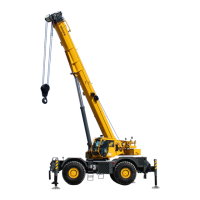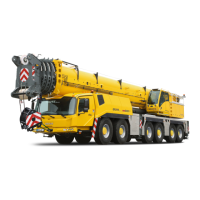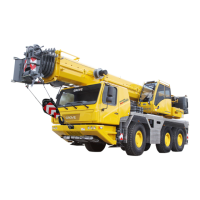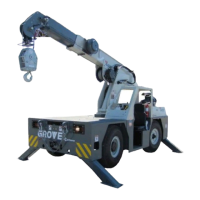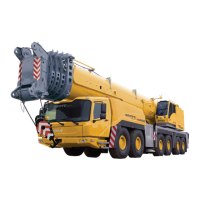HYDRAULIC SYSTEM TMS700E SERVICE MANUAL
2-52 Published 01-29-2015, Control # 512-01
CYLINDERS
General
This subsection provides descriptive information for all the
hydraulic cylinders used on this crane. The descriptions of
the cylinders given here is for the cylinder itself. For
information on how the cylinder functions in the individual
circuits, refer to the Description and Operation of that circuit.
Maintenance
General
There must be a gap between the ends of each wear ring
when it is installed onto the piston (as applicable) or head. In
addition, each wear ring gap is to be located as follows:
Divide 360 degrees by the number of wear rings on the
component. The resulting value is the number of degrees
each wear ring gap is to be located with respect to each
other.
The approximate wear ring gaps are as follows:
Table 2-3
Wear Ring Gap
Leakage Check
A hydraulic cylinder should not be disassembled unless it is
essential. The following checks will provide a means of
determining if a cylinder has a faulty or leaking piston seal.
1. Extend the rod to its maximum stroke. Remove the
retract hose from the cylinder. Cap the retract hose.
2. Apply hydraulic pressure to the piston side of the
cylinder and observe the open cylinder port for leakage.
If leakage is observed, the seals in the cylinder must be
replaced.
3. Fully retract the cylinder rod. Remove the extend hose
from the cylinder. Cap the extend hose.
4. Apply hydraulic pressure to the retract (rod) side of the
cylinder and observe the open cylinder port for leakage.
If leakage is observed, the seals in the cylinder must be
replaced.
5. Reconnect all cylinder ports.
NOTE: Piston seal trouble may be due to either worn or
damaged seals or to a scored cylinder. A scored
cylinder is usually caused by abrasive
contaminants in the hydraulic oil and is likely to
reoccur unless the system is drained, thoroughly
cleaned, and filled with clean, filtered hydraulic oil.
Temperature Effects on Hydraulic Cylinders
Hydraulic oil expands when heated and contracts when
cooled. This is a natural phenomena that happens to all
liquids. The coefficient of expansion for API Group 1
hydraulic oil is approximately 0.00043 cubic inches per cubic
inch of volume for 1°F of temperature change. Thermal
contraction will allow a cylinder to retract as the
hydraulic fluid which is trapped in the cylinder cools.
The change in the length of a cylinder is proportional to the
extended length of the cylinder and to the change in
temperature of the oil in the cylinder. For example, a cylinder
extended 7.62 m (25 ft) in which the oil cools 15.6°C (60°F)
would retract approximately 196.9 mm (7 3/4 in) (see charts
below). A cylinder extended 1.5 m (5 ft) in which the oil cools
15.6°C (60°F) would only retract approximately 38.1 mm (1
1/2 in). The rate at which the oil cools depends on many
factors and will be more noticeable with a larger difference in
oil temperature verses the ambient temperature.
Thermal contraction coupled with improper lubrication or
improper wear pad adjustments may, under certain
conditions, cause a “stick-slip” condition in the boom. This
“stick-slip” condition could result in the load not moving
Head (or Piston) Size Wear Ring Gap
Inch mm Inch mm
1 to 4.75 25.4 to 120.7 0.125 3.18
5 to 10.0 127.0 to 254.0 0.187 4.75
greater than 10.0 greater than 254.0 0.250 6.35
DANGER
Ensure pressure is applied to the piston side of the
cylinder only and the retract hose is capped.
DANGER
Ensure pressure is applied to the retract (rod) side of the
cylinder only and that the extend hose is capped.
Reference Only
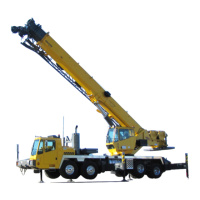
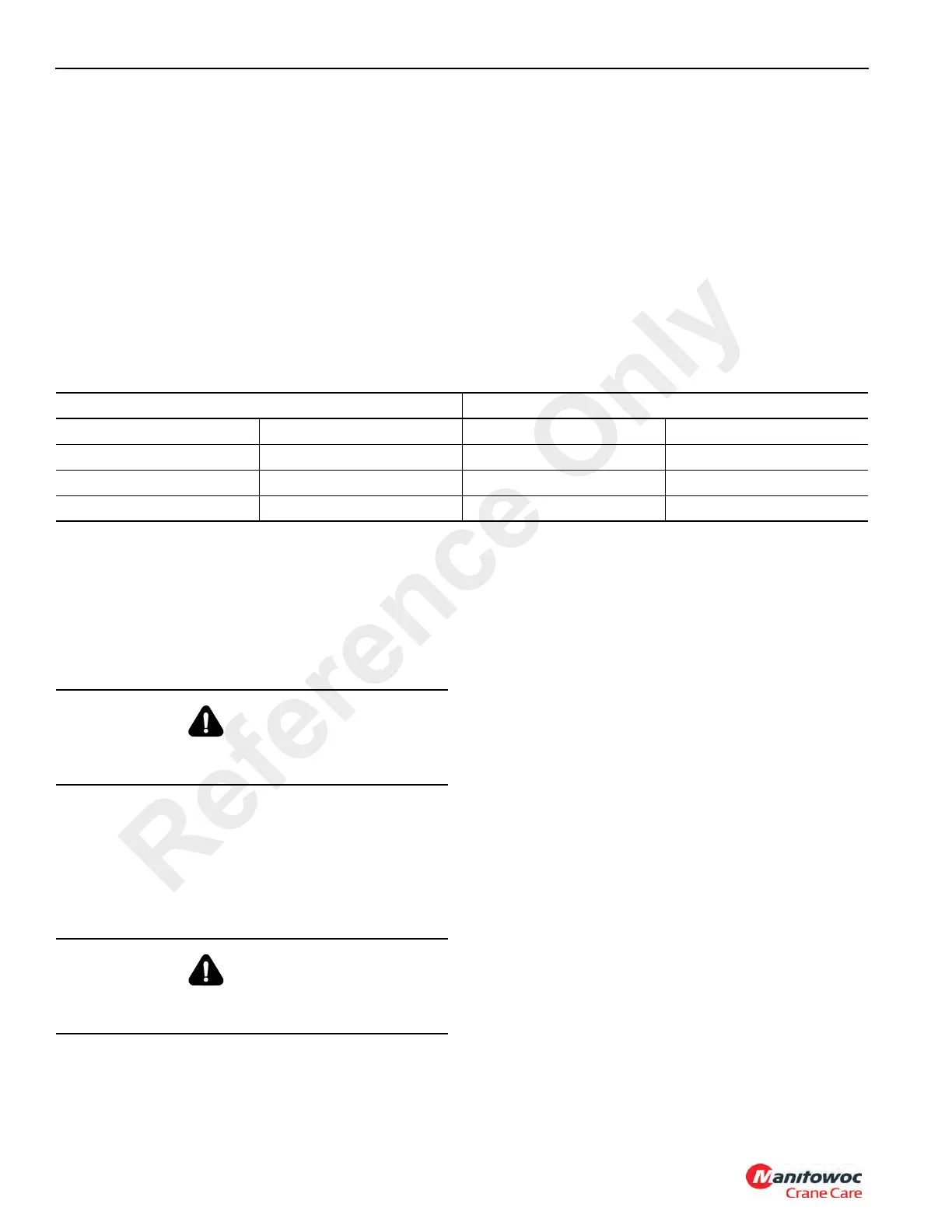